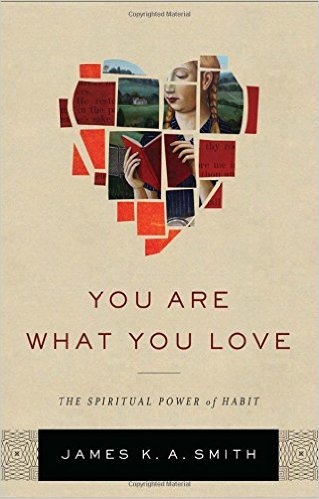 This is part of our series where we are discussing James K. A. Smith’s book You Are What You Love. Please check out or review part 1 and part 2 to get caught up. We are skipping chapters 3 and 4, though they are quite good, to get to more immediate application for family discipleship.
This is part of our series where we are discussing James K. A. Smith’s book You Are What You Love. Please check out or review part 1 and part 2 to get caught up. We are skipping chapters 3 and 4, though they are quite good, to get to more immediate application for family discipleship.
Chapter 5-Guard Your Heart: The Liturgies of the Home
In the first two chapters we discussed how our lives follow what we love, which is formed by “liturgies” in which we engage. We then saw how our world is full of rival stories (liturgies) to the gospel that cause us to love other things other than God. Often mundane, seemingly neutral activities are loaded with alien visions of the good life, the human problem, and our salvation that draw our hearts away from loving God.
Last week, Liz and I had the enormous privilege to dedicate our youngest daughter, Chara, to the Lord and we had to take some serious vows to disciple her to love the Lord with all her heart. We took the obligation (just as many of you have) to go beyond bringing her to church, but doing our best to teach her to love God and reject the evil one. Spending a couple hours on a Sunday morning alone will obviously not cultivate the hearts of our children (or mine) to truly love God, when the heart is being cultivated to love other things 166 hours of the week.
It’s for this reason Smith calls parents to really examine how the loves of our children are reinforced in our home lives, which can be an extremely hard task. In the most profound and challenging paragraph in the whole book he writes:
We should be concerned about the ethos of our households–the unspoken ‘vibe’ carried in our daily rituals. Every household has a ‘hum’…that is attuned to some end, some [vision of the good life]. We need to tune our homes, and thus our hearts, to sing his grace. That tuning requires intentionality with regard to the hum…You could have Bible ‘inputs’ every day and yet still have a household whose frantic rhythms are humming along with the consumerist myth of production and consumption. You might have Bible verses on the wall in every room of the house and yet the unspoken rituals reinforce self-centeredness rather than sacrifice.
If we could as a community grasp this one paragraph and implement it, we would raise a generation of spiritual giants. Smith moves to help us make it practical as he suggests to create family worship that taps into our imagination filled with story, poetry, music, symbols, crafts, and images that naturally capture our hearts over our minds. He encourages families to fall into rhythms of celebrating the Christian year – Advent/Christmas, Epiphany, Lent/Easter, Pentecost – where the home is decorated accordingly and activities are done to immerse children in the rhythms of holy time.
Pastor Sean has written a sketch of what that could look like here. Be sure to check it out as well as tell us what you do in your family to center the hearts of your family around Jesus.
Questions:
- What kind of “hum” does your family rituals have?
- What is implicitly viewed as the best life (I encourage you to be as critical as you can here)?
- How can you incorporate things that nurture the imaginations of your children?
- When (if you don’t already have times) can you intentionally have a time of family worship where you nurture the imaginations?
- What needs to get cut out to make time?
- What are ways you can make this Advent season a Christ-centered Christmas?
- Hospitality in a Covid World - December 17, 2020
- Jesus, the Liberator We Don’t Want - June 12, 2020
- Why I’m NOT an Inerrantist - June 11, 2020



